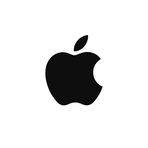Apple's Memory Game: A Look at the Evolution of RAM in Macs and MacBook Airs
April 29, 2024, 3:35 pm
Apple's memory management in Macs and MacBook Airs has been a rollercoaster ride over the years. From regular RAM upgrades to sudden halts, the tech giant's approach to memory allocation has left many scratching their heads.
A recent study by David Shaub on Mastodon sheds light on Apple's memory trends. Shaub's diagrams reveal a pattern of consistent RAM increases in Macs until 2012 and MacBook Airs until 2017. However, this upward trajectory came to a screeching halt post-Tim Cook's takeover from Steve Jobs.
The correlation between memory stagnation and the "Cook era" is intriguing. While some attribute it to market trends and technological shifts, others like Stuart MacHattie point out that early Macs saw a tenfold increase in RAM every six years. If this trend had continued, modern Macs would boast over 800GB of RAM. Yet, today's consumer PCs rarely exceed 64GB.
Apple's focus on enhancing performance through ARM processors, OS optimization, and SSD upgrades has also influenced its memory strategy. The company claims that 8GB of RAM in Macs equals 16GB in rival systems.
Despite these advancements, Apple continues to offer base models of iMacs and MacBook Pros with 8GB of RAM since 2012, and MacBook Airs with the same configuration since 2017. Higher RAM configurations come at a premium, raising eyebrows among users.
As MacRumors highlights, Apple's memory allocation strategy may face further scrutiny if the iPhone 16 debuts with 8GB of RAM. This disparity begs the question: why prioritize smartphone memory over multitasking Macs without additional costs?
Apple's memory maze continues to baffle consumers, with trade-in cancellations adding to the confusion. iPhone Upgrade Program members recently received emails stating their trade-ins were "canceled," despite completing the process months ago. The mix-up left many questioning Apple's handling of trade-ins, especially when their devices were handed over in-store.
The situation worsened when customers discovered their trade-in status marked as "canceled" on the Apple Store app. This unexpected turn of events has left many wondering if Apple's memory management extends beyond hardware to customer transactions.
A recent study by David Shaub on Mastodon sheds light on Apple's memory trends. Shaub's diagrams reveal a pattern of consistent RAM increases in Macs until 2012 and MacBook Airs until 2017. However, this upward trajectory came to a screeching halt post-Tim Cook's takeover from Steve Jobs.
The correlation between memory stagnation and the "Cook era" is intriguing. While some attribute it to market trends and technological shifts, others like Stuart MacHattie point out that early Macs saw a tenfold increase in RAM every six years. If this trend had continued, modern Macs would boast over 800GB of RAM. Yet, today's consumer PCs rarely exceed 64GB.
Apple's focus on enhancing performance through ARM processors, OS optimization, and SSD upgrades has also influenced its memory strategy. The company claims that 8GB of RAM in Macs equals 16GB in rival systems.
Despite these advancements, Apple continues to offer base models of iMacs and MacBook Pros with 8GB of RAM since 2012, and MacBook Airs with the same configuration since 2017. Higher RAM configurations come at a premium, raising eyebrows among users.
As MacRumors highlights, Apple's memory allocation strategy may face further scrutiny if the iPhone 16 debuts with 8GB of RAM. This disparity begs the question: why prioritize smartphone memory over multitasking Macs without additional costs?
Apple's memory maze continues to baffle consumers, with trade-in cancellations adding to the confusion. iPhone Upgrade Program members recently received emails stating their trade-ins were "canceled," despite completing the process months ago. The mix-up left many questioning Apple's handling of trade-ins, especially when their devices were handed over in-store.
The situation worsened when customers discovered their trade-in status marked as "canceled" on the Apple Store app. This unexpected turn of events has left many wondering if Apple's memory management extends beyond hardware to customer transactions.

